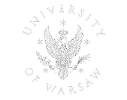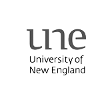The Present Meets the Past
In 2017 we met in Warsaw at the first of our ERC conferences under the banner of Hope – the mythical daughter of the Night: Our Mythical Hope in Children’s and Young Adults’ Culture... We have learnt that the darkness that falls upon the Earth brings out not only fears, but also time for reflection, and this is necessary for Hope to be able to illuminate our path. In parting after the conference, we did hope for many happy returns to the land of myths. Thus we are coming back this year, 2018, and with the help of Medusa, whose image invites us to rethink the ancient heritage anew. And all ye who enter her realm need not abandon Hope. On the contrary. As we know from Hesiod, Medusa is Hope’s niece (as the daughter of Phorcys and Ceto – Gaia’s children, while Gaia and Nyx, the mother of Hope, were both born out of Chaos).
With her Hesiodean and Homeric ancestry, Medusa has been accompanying us since time immemorial. She stands for a myriad of fates: a monster from the dawn of the world, a boastful priestess, a victim of the gods, an abused woman, and an incarnation of the power of the artist who can make the story live for eternity... Medusa is also a perfect image for Classical Reception Studies. Indeed, Classical Antiquity is often perceived as a petrified legacy of the past, like the ancient monster’s victims. In fact, it is a vibrant cultural experience, in continuous reinterpretation all around the globe, wherever the ancient heritage has reached throughout the ages. Thus, Medusa helps us to express the essence of our research within the ERC Consolidator Grant, the idea of the European Year of Cultural Heritage 2018 and of the newly established (in May 2017) Cluster: The Past for the Present, founded by four humanist faculties of the University of Warsaw, University of Munich (the city of Medusa Rondanini’s Glyptothek-lair), and the University of Bologna.
Medusa as the spokesperson (spokesmonster?) for Reception Studies allows us to grasp the potential of this research better. Looking in the mirror of Antiquity and comparing the emerging images of ourselves, our ancestors, neighbours, and people from faraway lands, we can understand better our present times, and this is also crucial for the shape of the future.

Zbigniew Karaszewski, The Present Meets the Past (2018), after Medusa Rondanini









